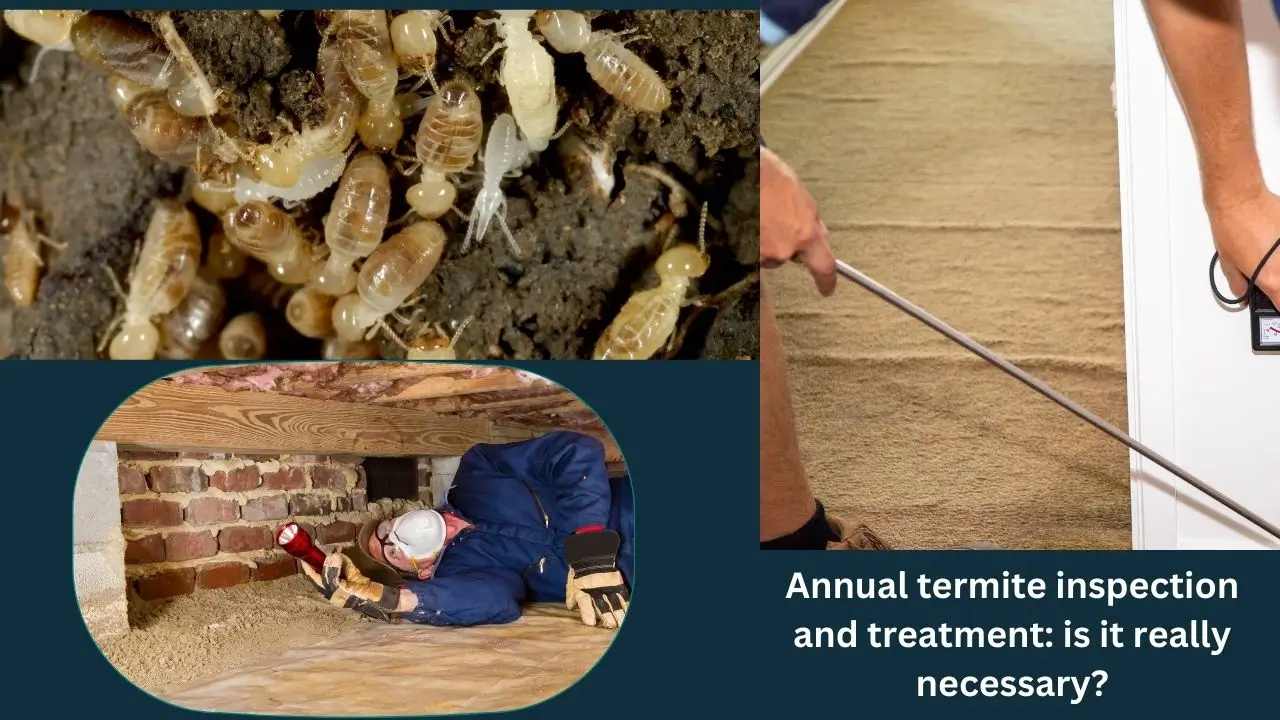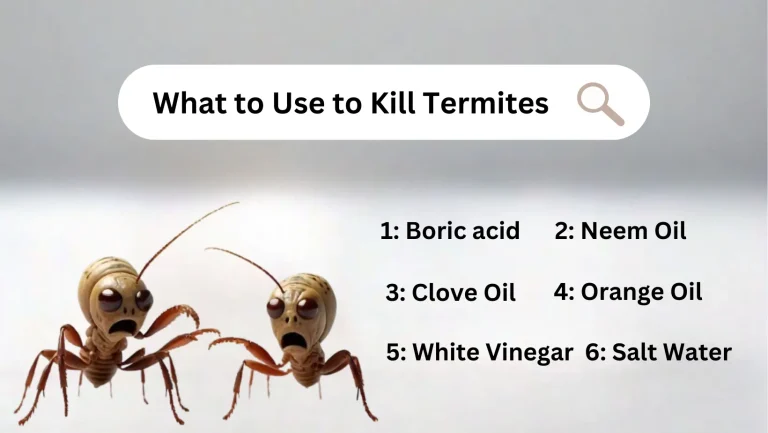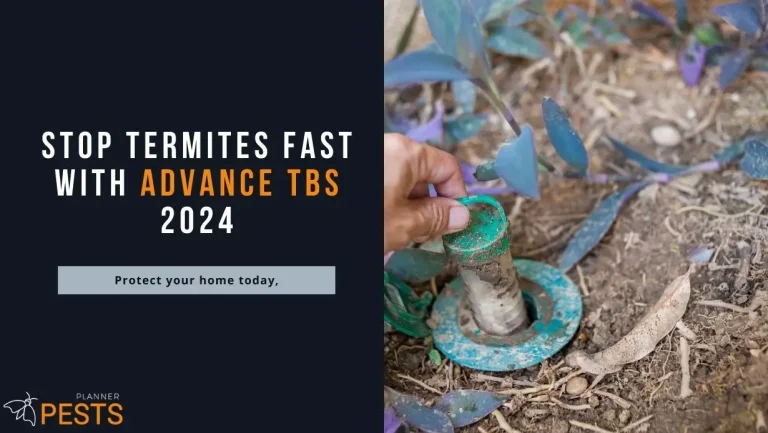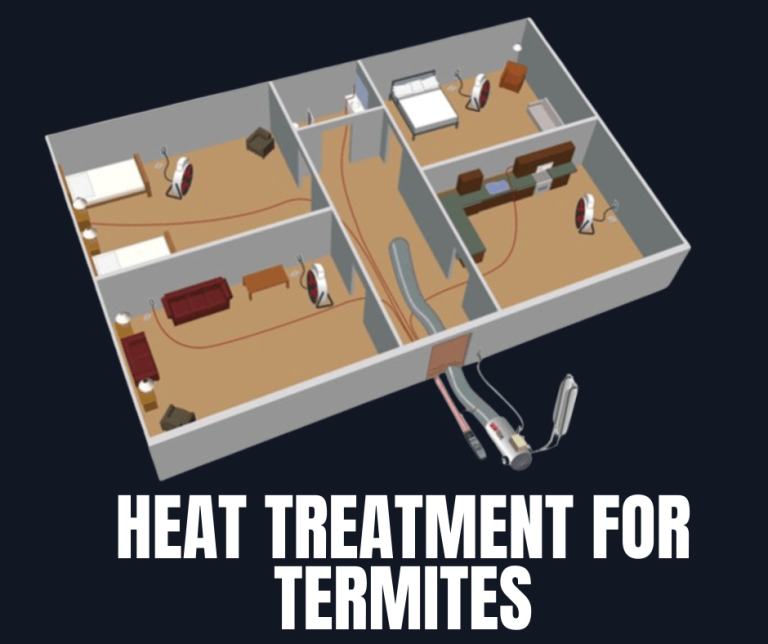Is Annual Termite Inspection and Treatment Really Necessary?

- What are Termites and Why Should I Care?
- The Costly Consequences of Ignoring Termites
- The Importance of Regular Inspections:
- Latest Trends and Developments:
- Annual Inspections Are Essential
- Is Annual Termite Treatment Necessary?
- Discuss Options With a Professional
- Treatment Options to Fit Your Needs and Budget
- Sustainable & Eco-Friendly Termite Control Methods
- When is Termite Treatment Necessary?
- Do I need an annual termite inspection?
- How Do I Know if I Need a Termite Inspection?
- How Often Termite Inspection?
- termite inspection checklist
- annual termite inspection cost
- how long does a termite inspection take?
- how much does a termite treatment cost?
- Regular Inspections Without Annual Treatments
- What Should You Do Between Treatments?
- How to Treat a Property with Termite History
- is annual termite treatment necessary in texas?
- is annual termite treatment necessary in florida?
- Is termite protection required in Florida?
- how often should you treat for termites in arizona?
- When is Termite Treatment Necessary? in Virginia
- Remember: Knowledge is Power! Protect Your Home from Termites
- Key Takeaways on Termite Prevention
Is annual termite inspection and treatment really necessary? Or can you get by with less frequent preventative measures? If you’re a homeowner in the United States, especially in termite-prone regions like Texas and Florida, you’ve likely grappled with similar questions.
Termites cause billions of dollars in damage annually, so understanding your options is crucial. So, let’s dive into the world of termite inspections and treatments, separating myth from reality and helping you make informed decisions for your home’s safety.
What are Termites and Why Should I Care?
Termites, often mistaken for ants, are social insects that feed on wood and cellulose. They work tirelessly, tunneling through walls, floors, and furniture, leaving destruction in their wake. The two main types in the US are subterranean termites, which live underground and build mud tunnels, and drywood termites, which nest within wood structures.
The Costly Consequences of Ignoring Termites
Ignoring termite activity is like ignoring a ticking time bomb. Their damage can be extensive, affecting the structural integrity of your home and leading to costly repairs. The National Pest Management Association estimates average termite treatment costs at $3,000, but neglecting them can snowball into tens of thousands of dollars in structural repairs.
The Importance of Regular Inspections:
Early detection is key to preventing major damage. Annual inspections, especially in high-risk areas, are crucial for identifying termite activity before it becomes a costly problem. They involve a trained professional visually inspecting your home’s interior and exterior, looking for signs of infestation.
Latest Trends and Developments:
The termite control industry is constantly evolving. New technologies like thermal imaging and moisture sensors are aiding in detection, while eco-friendly treatment options are gaining popularity. Consider these trends when choosing an inspection and treatment company.
Annual Inspections Are Essential
It’s no surprise that termites might be present even if you don’t see obvious signs of an infestation. Getting an annual inspection is the only way to detect termites early. Before they’ve caused noticeable damage to your home.
During the inspection, a pest control professional will check all areas of your home for evidence of termites. Like mud tubes, damaged wood, and discarded wings. Catching an infestation early makes treatment more effective. And prevents costly repairs down the line.
Annual inspections give you peace of mind. Knowing exactly where your home stands regarding termites. A pest control specialist can develop a treatment plan tailored to your situation. And address any problems before they become severe.
How Often to Inspect for Termites
- Annual inspections are recommended for all homes. Especially those in warm, humid climates where termites thrive.
- More frequent inspections every 6 months may be advised if you’ve had termites before. Or live in an area with heavy termite activity.
- For new homes, an initial inspection after construction is complete is important. Followed by yearly checkups.
- Inspect inside and outside your home, including crawlspaces, basements, attics and around the foundation.
Don’t wait until you see evidence of an infestation. Schedule annual termite inspections to catch issues early and prevent major damage.
Is Annual Termite Treatment Necessary?
While annual inspections are crucial, treatments on a yearly basis are not always necessary. Many factors influence how often termite treatment is needed:
- Type of termites – Different termite species can re-infest more or less often. Your pest control company will know what pests are common in your area.
- Extent of infestation – Minor, localized infestations may not need yearly treatments. Major termite problems require more frequent applications.
- Treatment type – Liquid treatments may lose effectiveness after 1-5 years. While bait stations can last 5+ years if properly maintained.
- Prevention history – If your home has no history of termite issues, annual treatments may be overkill.
- Location – Homes in warm, humid climates are at higher risk and may need more frequent treatments.
Regular inspections allow a pest control technician to determine how often treatments are needed. Based on the severity of any termite presence and other risk factors.
Discuss Options With a Professional
There is no definitive rule for how often termite treatment is needed. The best practice is to consult a professional pest control company. They can inspect your home and assess:
- The type of termites in your area
- The locations vulnerable to attack
- The extent of any existing infestations
- The right treatment types for your situation
A customized plan can then be designed to prevent termites and fit your budget. That may include annual treatments, or several years between applications. Along with preventative measures you can take between visits.
Together, you can land on the ideal termite prevention plan. One that protects your most valuable investment – your home. Without costing more than necessary on unneeded treatments.
Treatment Options to Fit Your Needs and Budget
There are several effective treatment options to eliminate and prevent termites. A pest control technician can recommend the best plan based on your home.
Liquid Application
This involves trenching and treating the soil around the foundation. And applying liquid barrier treatments in vulnerable areas. Liquids are typically effective for 1-5 years.
Termite Baits
Bait stations are installed around the home. The bait is slowly consumed by foraging termites, killing off the colony. Baits may provide 5+ years of protection when properly maintained.
Fumigation
This fills the home with gas to wipe out entire termite colonies at once. It’s only needed for the most severe infestations.
Combination Treatments
A combined approach with liquid applications and baits may be most effective. Stopping immediate threats while providing lasting protection.
Annual treatments are often recommended with liquid applications. While baits may allow for less frequent applications. Your pest control technician can explain which options work for your situation.
Sustainable & Eco-Friendly Termite Control Methods
Many pest control companies now offer sustainable termite treatment options. These prevent termites effectively while minimizing environmental impact:
- Orange oil – Made from orange peels, this natural solution repels and kills termites.
- Borate treatment – Borates are minerals that are toxic to termites but safe for humans.
- Termite baits – Baits use a small, targeted amount of pesticide to eliminate termites.
- Sand barriers – Sand or crushed glass barriers stop termites without chemicals.
Discuss eco-friendly options with your pest control company. To protect your home from termites in the most sustainable way possible.
When is Termite Treatment Necessary?
Termite treatment is recommended:
- If an annual inspection reveals signs of termites
- After swarmers emerge inside indicating an active infestation
- When you see mud tubes on the foundation or other areas
- If you notice crumbling drywall or damage to wood in the home
- After buying a new home with no prior termite history
- When your neighbor reports termites and you want to be proactive
- If it’s been more than 3 years since your last preventative treatment
- After construction that may have disturbed the soil around the home
- For homes more than 10 years old with no prior treatment
- In warm, humid climates conducive to termites
At the first sign of trouble, contact a professional for an inspection. Prompt treatment can eliminate termites before extensive damage occurs.
Do I need an annual termite inspection?
The short answer is yes. Here are some signs it’s time to schedule your annual termite inspection:
- It’s been longer than a year since your last inspection
- You’ve never had your home inspected for termites before
- You see signs of termites like tubes or swarmer wings
- Your neighbor had termites and you want to be proactive
- You live in a warm, humid area ideal for termites
- Your home is more than 10 years old
- Your home has wood construction
Don’t wait for definitive proof of an infestation. Get a termite inspection every year to catch issues early. Contact a professional pest control company to schedule your appointment.
How Do I Know if I Need a Termite Inspection?
Watch for these signs that it’s time to schedule a termite inspection:
- Hollow spots or cracks – Tap on wood around the home, hollow or soft areas may indicate termites.
- Mud tubes – Small mud tubes branching up from the ground onto walls or foundations may contain termite tunnels.
- Discarded wings – Seeing termite wings around windowsills, floors or swarms means reproduction is taking place.
- Damaged wood – Wood that is marred, hollowed or tunneled may be damaged by termites.
Catching these signs early allows treatment before major destruction occurs. Don’t ignore these red flags. Call for a prompt termite inspection at the first sign of trouble.
How Often Termite Inspection?
- Homeowners in all regions should get termite inspections annually.
- If you’ve had termites before, inspect every 6 months to be safe.
- New homes should be inspected after construction, then annually.
- Inspect inside and outside the home including crawlspaces, attics, basements and the foundation.
- Supplement annual inspections with your own periodic checks. Look for warning signs like mud tubes or damaged wood.
Annual professional inspections are a must. Combined with periodic DIY checks in between. This is the best way to catch termites early before major destruction.
termite inspection checklist
A comprehensive termite inspection should examine the interior and exterior of the home. Including:
- Basement and foundation – Look for mud tubes and cracks that could allow entry. Tap for hollow areas.
- Crawlspaces – Check wood supports, plumbing, insulation and stored items for damage. Shine a flashlight for tubes.
- Bathrooms – Tap drywall, tile, wood cabinets for hollow spots signaling termites.
- Attic – Inspect wood rafters, insulation, vents and ductwork for damage.
- Floors – Pull up carpet edges and check baseboards for sawdust-like frass.
- Yard – Note trees or stumps touching the home. Check mulch, planters and woodpiles for activity.
- Siding – Look for tubes extending up the side of the home from the soil.
A detailed inspection both inside and out is key. This ensures no area is missed where termites could lurk.
annual termite inspection cost
The average cost of an annual termite inspection ranges from $50-$100 for a basic visual inspection. Here are factors that influence the cost:
- Size of your home – Larger homes take more time and raise the inspection cost.
- Location – Pricing is usually higher in major metro areas vs rural areas.
- Extent of inspection – A basic visual inspection is cheaper than a more thorough probe of wood structure.
- Inspection method – Advanced tools like infrared cameras increase costs over a visual-only inspection.
- Additional services – Added services like gutter cleaning or crawlspace sealing add to the bill.
- Company reputation – Highly reviewed large companies may charge more than independents.
While $50-$100 is typical, premium in-depth inspections could run up to $200-$300 for a full structural check. Get multiple quotes to find the best rate for your needs.
how long does a termite inspection take?
A comprehensive termite inspection typically takes 1-3 hours depending on the size of your home. Here is a general timeline:
- 15-30 minutes for interior visual inspection.
- 15-30 minutes inspecting the exterior and yard.
- 15-30 minutes in crawlspaces, attic and unfinished basements.
- 30 minutes+ for probing wood structures if ordered.
- 30 minutes showing you damage areas, explaining the report, and making treatment recommendations.
With a general visual inspection of a typical single family home, plan for the full inspection to take 1-2 hours. Add more time for larger homes over 2,500 square feet. While smaller condos may take closer to 1 hour or less.
how much does a termite treatment cost?
Professional termite treatment costs $1,200-$3,000 on average. Here are factors affecting the price:
- Method – Tenting is most expensive at $4,000+. Liquid treatment averages $1,200-$1,500. Baits run $1,000-$2,000.
- Size of home – More square footage requires more pesticide increasing the cost.
- Location – Metro areas are more expensive than rural areas due to higher labor costs.
- Severity of infestation – Heavy infestations take more work and chemical to treat.
- Environmental factors – Treatment is pricier in wet, humid climates ideal for termites.
- Preventative vs curative – Preventative treatment is cheaper than dealing with major damage.
Get quotes from 3 reputable pest control companies to find the best rates for your property, including options for beam treatment if termites are found.
Regular Inspections Without Annual Treatments
Annual termite inspections are highly recommended for all homes. But preventative treatments don’t necessarily need to be done yearly in every case. Here are some guidelines:
- Newer homes with no history of infestation may only need treatments every 3-5 years.
- Baits and more permanent treatments can protect for 5+ years between applications.
- Minor, localized infestations may be treatable without whole-home treatment yearly.
- In arid climates, termites are less active so less frequent treatments may suffice.
Work with your pest control technician to determine the ideal schedule. Annual inspections along with targeted treatments as needed. This prevents spending on unnecessary yearly treatments while staying protected.
What Should You Do Between Treatments?
Between preventative treatments, be proactive with these DIY steps to deter termites:
- Eliminate wood contact – Trim back trees and bushes touching the home. Remove old stumps. Replace wood mulch with rock.
- Fix leaks – Repair leaky pipes, faucets and roof leaks that allow moisture termites need.
- Improve ventilation – Ensure crawlspaces, attics and basements have adequate air circulation to deter termites.
- Monitor for signs – Check periodically for mud tubes, strange wood damage or termite swarmers.
Take simple preventative measures between treatments. This provides an added layer of protection from destructive termites.
How to Treat a Property with Termite History
For homes with a known history of termite infestations, an aggressive treatment approach is important:
- Perform treatments at least annually, more often in warm climates. Rotate liquid applications and baits for best protection.
- Do semiannual inspections to catch reinfestations early before major damage occurs.
- Consider tent fumigation if infestations persist despite other treatments. This eliminates termites inside and out.
- Improve drainage and ventilation around the home to discourage termites. Eliminate wood mulch and stumps.
- Monitor closely between treatments – check foundations, walls, attics for signs. Address any activity immediately.
Don’t take chances with recurring infestations. Work closely with your pest control company to use all tools available. And tackle problems aggressively before they get out of hand.
is annual termite treatment necessary in texas?
Termite treatment every year is generally recommended in Texas due to its hot, humid climate ideal for termites. Here’s why annual treatments are usually needed:
- Multiple termite species like subterranean, drywood and Formosan termites thrive in Texas.
- Warm weather allows termites to be active and breed year-round.
- Abundant moisture from Gulf coast humidity supports termite colonies.
- Texas homes tend to have wood construction vulnerable to termite attack.
- Termites cause over $1 billion in property damage annually in the state.
Consult with your pest control professional about risks in your area. An annual, full-perimeter treatment provides the best protection against costly termite damage in Texas.
is annual termite treatment necessary in florida?
Florida’s warm, humid climate makes it ground zero for termites. Both subterranean termites and destructive Formosan termites flourish in the state. For most Florida homes, annual termite treatments are recommended:
- High humidity provides abundant moisture that termites need to thrive.
- Temperatures support termite activity and reproduction year-round.
- Plentiful wood construction gives termites ample food sources.
- Preventing Formosan termites is crucial as they can form huge colonies and cause rapid damage.
- 1 million homes in FL have termites, leading to over $1 billion in damage yearly.
To best protect your property in Florida’s high-risk conditions, invest in professional treatments at least annually. Consistent prevention is key to avoiding costly destruction from rampant termites.
Is termite protection required in Florida?
There is no law in Florida that requires termite protection. However, annual inspections and preventative treatments are strongly recommended for most homes. Here’s why consistent termite prevention is so critical in Florida:
- Warm climate enables multiple termite species to flourish, including highly destructive Formosan termites.
- Humid conditions provide ideal moisture that termites need to thrive.
- Plentiful wood construction gives termites abundant food sources.
- 1 in 5 homes in FL show signs of termite damage.
- Termites cause over $1 billion in property damage in Florida annually.
While not legally mandated, proactive termite protection should be considered essential. Work with a professional to design an annual plan to defend your home against termite destruction.
how often should you treat for termites in arizona?
Arizona has a hot, dry climate that is less ideal for termites compared to humid states. Here are general guidelines for Arizona termite treatment frequency:
- After an active infestation is discovered, treat annually for 2-3 years. Then reevaluate if termites persist.
- For prevention without previous infestations, treatments every 3-5 years are often sufficient.
- Use baits or borate treatments that provide 5+ years of protection between applications.
- Inspect annually regardless of treatments to catch any activity early.
- Increase frequency to every 1-2 years if you live near irrigated landscaping.
- Treat more often if you’ve had recurring issues with termites in the past.
- Focus treatments around vulnerable areas like foundations, bath traps, and slab penetrations.
Arizona’s arid climate means termites are less pervasive than in tropical regions. But targeted prevention is still important to protect your home. Consult with a professional to determine the ideal treatment schedule.
When is Termite Treatment Necessary? in Virginia
Here are some signs it’s time for termite treatment in Virginia homes:
- An annual inspection reveals termite activity.
- You see mud tubes along the foundation or wooden structures.
- There are swarms of winged termites emerging indoors.
- Wood in the home shows unusual damage like tunnels or hollowing.
- It’s been 3+ years since your last preventative treatment.
- Construction, excavation or leaks have created conditions for termites.
- Your neighbor reports termites and you want to be proactive.
Virginia has subterranean, drywood and dampwood termites. Don’t ignore signs of activity – schedule treatment right away before major destruction. Consistent prevention also helps deter costly infestations.
Remember: Knowledge is Power! Protect Your Home from Termites
Being informed about termites empowers you to protect your home. Remember these key facts:
- Get annual termite inspections without fail. This allows early detection before heavy damage occurs.
- How often you treat depends on your home’s unique risk factors. Follow your pest professional’s recommendations.
- Termites threaten homes nationwide, causing over $5 billion in damage yearly in the U.S. Stay vigilant.
- There are visible signs of termites like mud tubes and winged swarmers. If you see any, call for treatment right away.
- Eliminate wood mulch, stumps and moisture sources around your home to deter termites.
Stay proactive against termites to defend your valuable investment.
Key Takeaways on Termite Prevention
Annual Inspections Are Essential
Annual termite inspections allow detection before infestations get out of control. Don’t skip this critical step in protecting your home.
Annual Treatments Often Not Needed
While yearly inspections are a must, annual treatments are not required in every case. Follow your pest professional’s advice on treatment frequency.
Discuss Options With a Professional
A qualified pest control technician can assess your home’s unique risks. And recommend a tailored termite prevention plan that fits your needs.
Protect your home from destructive termites with consistent prevention. Contact a professional to start an annual protection plan tailored for your situation. With vigilance, you can defend your home against termite damage and infestation.






